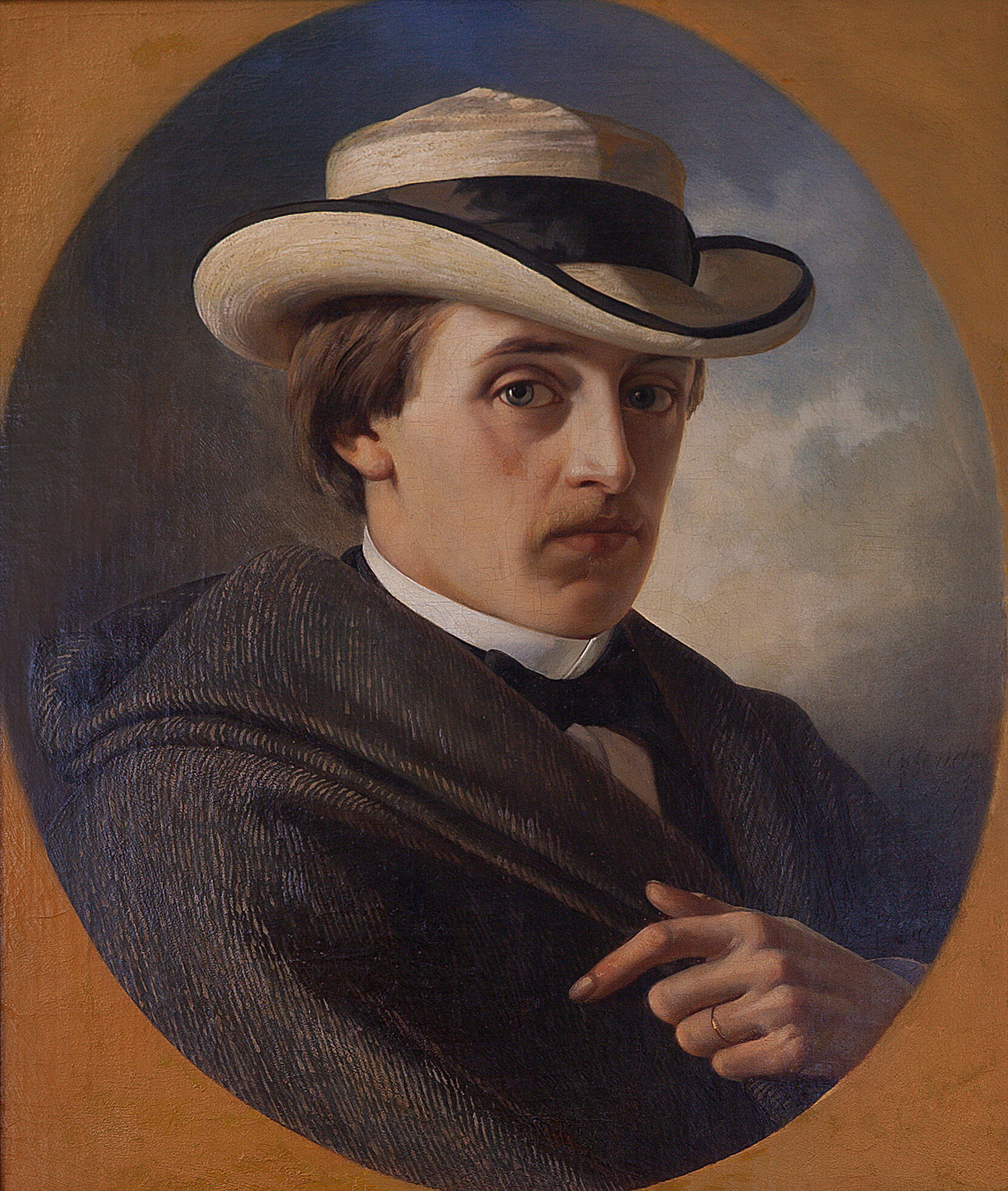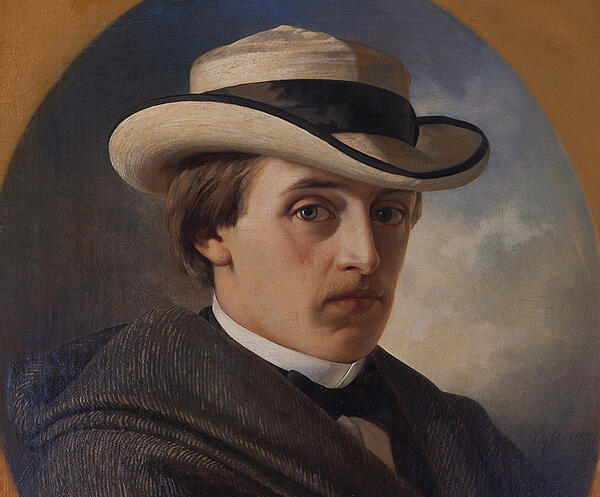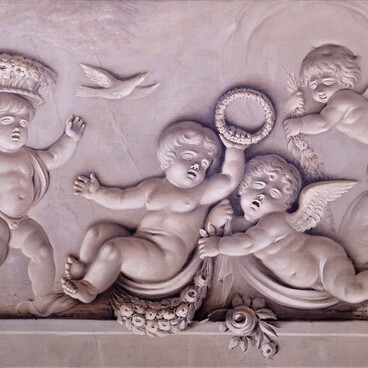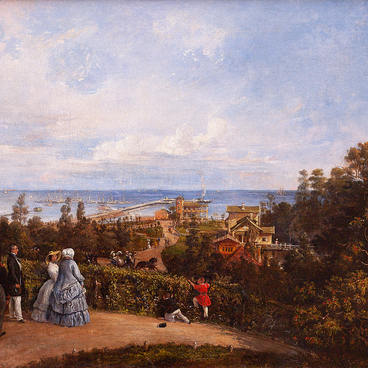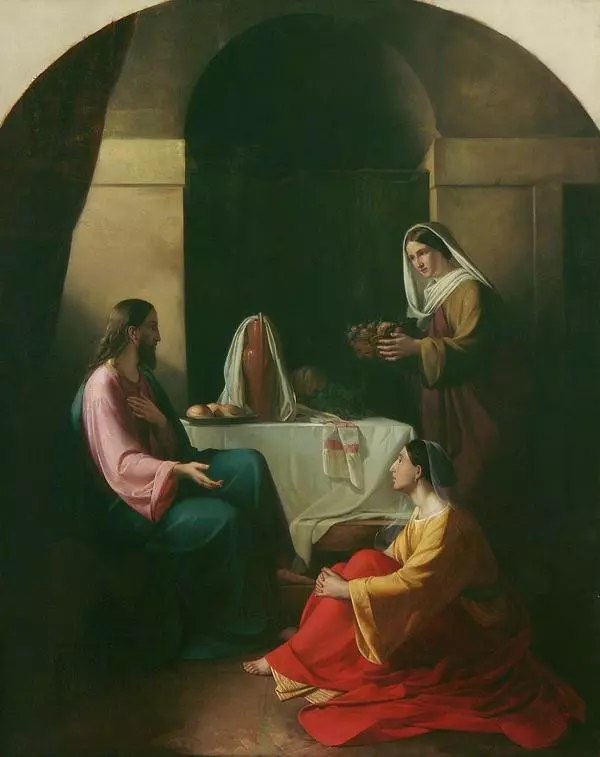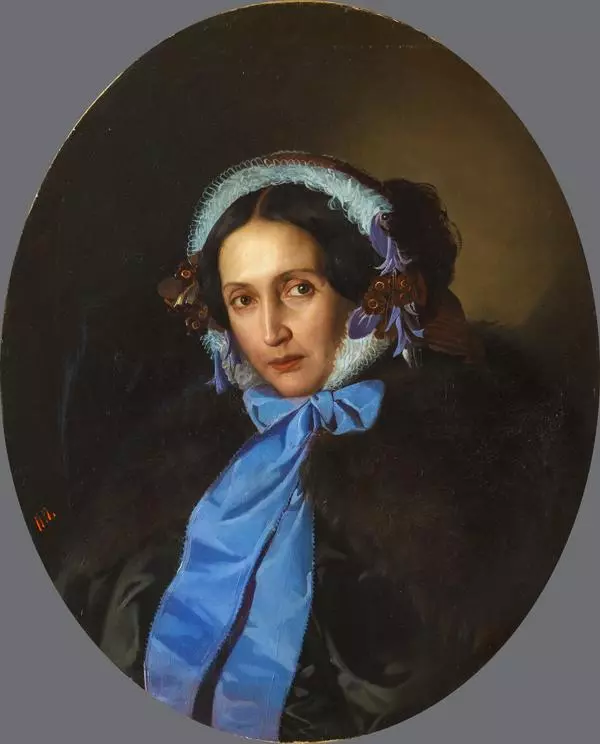The museum houses the only known self-portrait of Pavel Pleshanov. He was a professor at the Imperial Academy of Arts and a fashionable portraitist in the 1860s and 1870s. The artist also created paintings on historical and religious themes.
The son of a rich Rostov merchant Fyodor Pleshanov and grandson of millionaire Maxim Pleshanov, he decided to devote himself fully to art. After graduating from the Saint Petersburg Commercial College, the young man entered the Academy of Arts. At the same time, he took private lessons from academician Fyodor Bruni, the author of 25 frescoes at the famous St. Isaac’s Cathedral in St. Petersburg and the rector of the Imperial Academy of Arts. Bruni noted the abilities of his student and his passion for art.
Pavel Pleshanov created this portrait of himself in a hat in Belgium in 1863. By that time, he had received several awards from the Academy of Arts and the title of academician; famous people and members of the imperial family were among his customers.
The style of this portrait demonstrates the transition between Classicism and Romanticism. On the one hand, it is made in the classical tradition, as evidenced by clear lines and strict composition. The artist’s figure is painted within an oval, rounded lines and shapes are rhythmically repeated in the silhouette, facial features, and elements of clothing. These repetitions create a complete impression of the composition.
On the other hand, the portraitist focuses on his own inner world with personal experiences, feelings, emotions. During the period of Romanticism, painters stopped creating ceremonial portraits. The inner contradictions of a human being and the struggle of light and darkness came to the fore. The artist romanticized the image by darkening the left part of the face and contrasting it with the light right half. The gaze is directed at the viewer: a questioning, somewhat anxious look. The diagonals of the folds of the cloak, light accents (the collar, the hat brim, his illuminated hand), — it all creates a sense of movement.
Contemporaries remembered Pavel Pleshanov as a very kind sensitive person. In the ‘Notes of a Rector and Professor at the Academy of Arts’ Fyodor Ivanovich Iordan wrote:
The son of a rich Rostov merchant Fyodor Pleshanov and grandson of millionaire Maxim Pleshanov, he decided to devote himself fully to art. After graduating from the Saint Petersburg Commercial College, the young man entered the Academy of Arts. At the same time, he took private lessons from academician Fyodor Bruni, the author of 25 frescoes at the famous St. Isaac’s Cathedral in St. Petersburg and the rector of the Imperial Academy of Arts. Bruni noted the abilities of his student and his passion for art.
Pavel Pleshanov created this portrait of himself in a hat in Belgium in 1863. By that time, he had received several awards from the Academy of Arts and the title of academician; famous people and members of the imperial family were among his customers.
The style of this portrait demonstrates the transition between Classicism and Romanticism. On the one hand, it is made in the classical tradition, as evidenced by clear lines and strict composition. The artist’s figure is painted within an oval, rounded lines and shapes are rhythmically repeated in the silhouette, facial features, and elements of clothing. These repetitions create a complete impression of the composition.
On the other hand, the portraitist focuses on his own inner world with personal experiences, feelings, emotions. During the period of Romanticism, painters stopped creating ceremonial portraits. The inner contradictions of a human being and the struggle of light and darkness came to the fore. The artist romanticized the image by darkening the left part of the face and contrasting it with the light right half. The gaze is directed at the viewer: a questioning, somewhat anxious look. The diagonals of the folds of the cloak, light accents (the collar, the hat brim, his illuminated hand), — it all creates a sense of movement.
Contemporaries remembered Pavel Pleshanov as a very kind sensitive person. In the ‘Notes of a Rector and Professor at the Academy of Arts’ Fyodor Ivanovich Iordan wrote:
